
Overview
The manufacturing industry encompasses the processes and technologies used to convert raw materials into finished products on a large scale. This sector is integral to the economy, driving innovation and economic growth through the production of goods ranging from automobiles and electronics to textiles and machinery. Manufacturing involves various stages, including design, prototyping, assembly, quality control, and distribution. The industry leverages advanced technologies such as automation, robotics, and additive manufacturing to enhance efficiency, precision, and scalability. Key challenges include managing supply chain complexities, adhering to regulatory standards, and integrating sustainable practices to minimize environmental impact. As the industry evolves, it increasingly incorporates digital tools like IoT and AI to optimize operations and meet the growing demands of global markets.
Depending on specific features and functions, GAO Tek’s Z-wave end devices are sometimes referred to as z-wave peripheral devices, z-wave endpoint devices, z-wave accessory devices, z-wave remote units, z-wave terminal devices, z-wave node device, z-wave subordinate devices, z-wave receiver units, z-wave client devices , and z-wave slave devices.
GAO Tek’s Z-wave end devices have the following applications in manufacturing industry:
- Climate Control Management: GAO Tek’s Z-Wave temperature and humidity sensors are critical in managing the environmental conditions within manufacturing facilities. These sensors continuously monitor temperature and humidity levels, providing real-time data that is essential for processes sensitive to these variables. By integrating these sensors with HVAC systems, manufacturers can achieve precise control over the climate in production areas. This ensures that conditions remain within specified parameters, which is crucial for maintaining product quality and preventing equipment malfunctions that could arise from environmental fluctuations.
- Energy Efficiency Optimization: In manufacturing facilities, GAO Tek’s Z-Wave power meters and smart plugs play a pivotal role in energy management. These devices measure and track energy consumption across various machinery and systems, providing valuable insights into usage patterns. By analyzing this data, manufacturers can identify areas where energy is being wasted and implement strategies to optimize consumption. For example, automated control of power to machines based on production schedules can reduce unnecessary energy use, leading to significant cost savings and improved overall energy efficiency.
- Enhanced Security and Safety: Z-Wave end devices such as motion detectors, door/window sensors, and alarms are instrumental in enhancing security within manufacturing environments. Motion detectors can be placed in sensitive or high-value areas to detect unauthorized movement, triggering alerts if unusual activity is detected. Door and window sensors ensure that access points are secured, preventing unauthorized entry into critical areas. These devices contribute to a safer workplace by providing real-time alerts and monitoring, which helps in preventing potential security breaches and ensuring compliance with safety protocols.
- Asset and Inventory Management: GAO Tek’s Z-Wave tag readers and RFID systems are used extensively for tracking and managing assets and inventory within manufacturing facilities. These devices enable real-time monitoring of the location and status of equipment, raw materials, and finished products. By using Z-Wave technology, manufacturers can maintain accurate inventory records, streamline resource allocation, and reduce the risk of loss or misplacement of valuable assets. This enhanced visibility into asset and inventory management supports better logistical planning and ensures that production processes are not disrupted due to resource shortages.
- Process Automation: The integration of GAO Tek’s Z-Wave actuators and sensors into manufacturing processes facilitates significant improvements in automation. These devices can automate various aspects of production, such as controlling machinery settings, adjusting operational parameters, and managing conveyor systems. By leveraging Z-Wave technology for process automation, manufacturers can enhance workflow efficiency, ensure consistent product quality, and reduce the need for manual interventions. This automation leads to streamlined operations and optimized production schedules, contributing to overall operational efficiency.
- Lighting Control Systems: GAO Tek’s Z-Wave smart lighting systems provide advanced control over illumination in manufacturing environments. These systems allow for dynamic adjustment of lighting levels based on the time of day, activity levels, or specific production requirements. By integrating Z-Wave-controlled lighting, manufacturers can improve visibility in work areas, reduce energy consumption through efficient lighting schedules, and enhance the working environment. Proper lighting control not only improves safety but also contributes to better working conditions and increased productivity.
- Predictive Maintenance: GAO Tek’s Z-Wave vibration sensors and operational monitors are used to implement predictive maintenance strategies for machinery and equipment. These devices continuously monitor the performance and condition of machinery, detecting anomalies such as excessive vibrations or irregular operating conditions. By providing early warnings of potential issues, Z-Wave devices enable manufacturers to perform maintenance activities before equipment fails. This proactive approach reduces downtime, minimizes production disruptions, and extends the lifespan of critical machinery.
- Worker Health and Safety Monitoring: In manufacturing settings, GAO Tek’s Z-Wave wearable devices are used to monitor the health and safety of workers. These wearables can track vital signs, such as heart rate and body temperature, and provide alerts if workers are exposed to hazardous conditions or experience health issues. By incorporating Z-Wave technology into worker safety programs, manufacturers can ensure a safer working environment, respond promptly to health concerns, and comply with occupational health and safety regulations.
- Building Management Integration: GAO Tek’s Z-Wave devices can be integrated into building management systems (BMS) to provide centralized control over various facility systems, including lighting, HVAC, and security. This integration allows for streamlined management of building operations from a single interface, facilitating better coordination between manufacturing processes and facility management. By utilizing Z-Wave technology within a BMS, manufacturers can achieve a more cohesive approach to managing their facilities, optimizing environmental conditions, and enhancing overall operational efficiency.
- Regulatory Compliance Monitoring: GAO Tek’s Z-Wave end devices are also used to monitor and report conditions relevant to regulatory compliance in manufacturing environments. For example, Z-Wave sensors can track environmental conditions to ensure that they meet industry-specific standards and regulations. This data is crucial for maintaining compliance with environmental and quality regulations, providing manufacturers with the necessary documentation and alerts to address any deviations. By utilizing Z-Wave technology for compliance monitoring, manufacturers can avoid regulatory penalties and maintain high standards for product quality and safety.
More information on z-wave end devices and their applications in other industries can be found on
This category page lists related products
Systems in Manufacturing Industry Utilizing Z-Wave End Devices
Here are some popular systems in Z-Wave end devices using manufacturing industry:
Environmental Monitoring and Control: Z-Wave temperature and humidity sensors play a critical role in maintaining optimal environmental conditions within manufacturing environments. These sensors provide real-time data on climate variables, which is essential for processes sensitive to temperature and humidity fluctuations. By integrating these sensors with HVAC systems, manufacturers can ensure that production conditions remain within specified parameters, thereby preserving product quality and machinery integrity.
- Climate Regulation: Automatically adjust HVAC settings based on real-time temperature and humidity readings to ensure stable conditions.
- Data-Driven Decisions: Use collected data to make informed decisions about environmental controls and process adjustments.
- Preventive Measures: Identify and address potential issues before they affect production, reducing the risk of product defects or equipment malfunctions.
Energy Management: Z-Wave-enabled power meters and smart plugs are used to monitor and manage energy consumption across manufacturing facilities. These devices provide detailed insights into the energy usage of different machinery and systems, allowing for effective energy management and cost savings. By analyzing consumption patterns and implementing automated control measures, manufacturers can optimize energy efficiency and reduce operational costs.
- Real-Time Monitoring: Track energy usage in real time to identify high-consumption areas and potential inefficiencies.
- Automated Control: Schedule power usage and turn devices on or off remotely to match production needs and reduce energy waste.
- Cost Reduction: Analyze energy data to implement strategies that lower utility bills and improve overall energy efficiency.
Safety and Security: Z-Wave devices enhance safety and security within manufacturing environments through the use of motion detectors, door/window sensors, and alarms. These devices monitor access points, detect unauthorized movements, and trigger alerts in case of security breaches. This ensures that critical areas are protected and that potential security threats are addressed promptly.
- Access Control: Secure sensitive areas by monitoring doors and windows to prevent unauthorized access.
- Intrusion Detection: Use motion detectors to identify unusual activity and trigger immediate security responses.
- Automated Alerts: Receive instant notifications about security breaches or safety concerns to facilitate quick intervention.
Asset and Inventory Management: Z-Wave tag readers and RFID systems are employed to track and manage assets and inventory within manufacturing facilities. These devices provide real-time visibility into the location and status of equipment, raw materials, and finished products. Effective asset management improves inventory accuracy, reduces loss, and ensures that resources are readily available for production.
- Real-Time Tracking: Monitor the movement and status of inventory and assets to maintain accurate records.
- Efficient Resource Allocation: Ensure timely availability of materials and equipment to prevent production delays.
- Loss Prevention: Reduce the risk of loss or misplacement of valuable assets through continuous tracking and management.
Process Automation: Z-Wave-enabled actuators and sensors are utilized to automate various manufacturing processes, enhancing operational efficiency and reducing manual intervention. By integrating these devices into production workflows, manufacturers can streamline operations, ensure consistent quality, and respond dynamically to process changes.
- Workflow Optimization: Automate repetitive tasks and machinery adjustments to improve process efficiency and consistency.
- Dynamic Control: Use sensor inputs to make real-time adjustments to production processes based on operational requirements.
- Increased Productivity: Enhance overall productivity by reducing the need for manual controls and interventions in manufacturing processes.
GAO Tek’s targeted markets are North America, particularly the U.S., and Canada.
Complying with Government Regulations
GAO Tek’s z-wave end devices comply or help our customers comply with the U.S. government regulations such as:
- FCC – Radio Frequency Devices
- FCC- Private Land Mobile Radio Services
- OSHA- General Industry Standards
- OSHA – Construction Industry Standards
- NIST Special Publication- Security and Privacy Controls for Information Systems and Organizations
- NIST Special Publication – Guide to Industrial Control Systems (ICS) Security
- UL – Access Control System Units
- UL- Safety Requirements for Electrical Equipment for Measurement, Control, and Laboratory Use
- CFR Quality System Regulation
- ANSI/ISA – Enterprise-Control System Integration
GAO Tek’s z-wave end devices comply or help our customers comply with the Canadian government regulations such as:
- Canada Radio-communications Act (RCA)
- ISED (Innovation, Science and Economic Development Canada)
- RSS-Gen – General Radio Communication Standard
- ISED RSS- Licensed Radio Apparatus
- Canadian Electrical Code (CEC)
- Occupational Health and Safety Act (OHSA)
- Canada Labour Code
- Occupational Health and Safety
- NRC (National Research Council) – National Building Code of Canada (NBCC)
- Health Canada – Medical Device Regulations
Case Studies of Z-Wave End Devices in Manufacturing Industry
Z- wave end devices are sometimes called as z-wave peripheral devices, z-wave endpoint devices, z-wave accessory devices, z-wave remote units, z-wave terminal devices, z-wave node device, z-wave subordinate devices, z-wave receiver units, z-wave client devices and z-wave slave devices.
Here are some practical examples of using z-wave end devices in manufacturing industry:
In the Northeast region of the U.S., Z-Wave end devices have been successfully implemented across various manufacturing facilities. One notable case is a textile manufacturer in Massachusetts, which integrated Z-Wave temperature and humidity sensors into its production environment. These sensors provided real-time monitoring and control of environmental conditions, crucial for maintaining the quality of fabrics during production. The system enabled precise adjustments to HVAC settings, reducing material waste and ensuring consistent product quality.
A pharmaceutical plant in New Jersey adopted Z-Wave power meters and smart plugs to optimize its energy consumption. By using these devices, the facility was able to track energy usage in real-time and implement energy-saving measures, resulting in substantial cost reductions and improved operational efficiency. The integration of Z-Wave technology facilitated better management of electrical loads and streamlined energy usage, aligning with the plant’s sustainability goals.
The Midwest region has also seen significant applications of Z-Wave end devices in manufacturing. An automotive parts manufacturer in Michigan utilized Z-Wave asset tracking systems to manage its inventory and equipment more effectively. These devices provided real-time data on the location and status of parts, enhancing inventory accuracy and operational efficiency. By streamlining asset management, the manufacturer was able to reduce delays and improve production workflows.
In Illinois, a food processing plant implemented Z-Wave climate control devices to monitor and regulate temperature and humidity levels crucial for food safety. The sensors ensured that environmental conditions were consistently maintained, which is essential for compliance with food safety standards. This system not only improved the quality and shelf life of products but also optimized the plant’s energy use by integrating with its HVAC systems.
In the South region, Z-Wave end devices have been effectively utilized in various manufacturing settings. A chemical processing facility in Texas employed Z-Wave safety and security devices, such as motion detectors and door sensors, to enhance its safety measures. These devices played a crucial role in monitoring access to sensitive areas and detecting potential security breaches. The integration of Z-Wave technology improved the facility’s overall safety and compliance with regulatory standards.
A plastics manufacturing plant in Florida used Z-Wave smart lighting systems to optimize illumination based on production needs. By adjusting lighting levels according to the time of day and specific tasks, the plant achieved energy savings and enhanced working conditions. The Z-Wave-controlled lighting system not only reduced energy consumption but also contributed to a more efficient and safer working environment.
The West region has also seen diverse applications of Z-Wave end devices in manufacturing industries. An electronics manufacturer in California adopted Z-Wave energy management devices to monitor and optimize energy consumption across multiple production lines. By analyzing energy usage data, the facility identified opportunities for cost savings and improved operational efficiency. The integration of Z-Wave technology allowed for better control over electrical loads and contributed to the company’s sustainability efforts.
In Washington, a beverage manufacturing plant used Z-Wave asset tracking systems to manage inventory and monitor equipment status. These systems provided real-time visibility into asset location and condition, which helped streamline logistics and reduce operational disruptions. The implementation of Z-Wave tracking technology improved inventory accuracy and supported better resource management.
In Canada, Z-Wave end devices have been applied effectively across various manufacturing sectors. A manufacturing facility in Ontario utilized Z-Wave temperature and humidity sensors to monitor and control environmental conditions in its production area. These sensors ensured that the facility maintained optimal conditions for manufacturing processes, leading to improved product quality and compliance with industry standards.
In Quebec, an automotive parts supplier implemented Z-Wave power management devices to optimize energy use throughout its production facility. The devices provided real-time monitoring and control of energy consumption, resulting in significant cost savings and enhanced energy efficiency. This implementation supported the supplier’s sustainability goals and improved overall operational performance.
GAO RFID Inc. RFID Hardware, a sister company of GAO Tek Inc., is ranked as a top 10 RFID supplier in the world. Its RFID, BLE, and IoT products have also been widely used in Manufacturing Industry.
Use of Z-Wave End Devices with Leading Software and Cloud Services in Manufacturing Industry
GAO Tek has used or has facilitated its customers to use GAO’s z-wave end devices with some of the leading software and cloud services in their applications. Examples of such leading software and cloud services include:
- Samsung SmartThings
- Z-Wave Alliance’s Z-Wave Application Program Interface (API)
- Crestron
- Control4
- Insteon Hub
- Hubitat Elevation
- Vera Control
- Leviton Decora Smart Hub
- HomeSeer
- Fibaro Home Center
- RTI Integration Designer
- Lutron Caseta Wireless
- Amazon Web Services (AWS) IoT
- Microsoft Azure IoT
- Google Cloud IoT
Meeting Customers’ Demands
Large Choice of Products
In order to satisfy the diversified needs of their corporate customers, GAO Tek Inc. and its sister company GAO RFID Inc. together offer a wide choice of testing and measurement devices, network products, RFID, BLE, IoT, and drones.
Fast Delivery
To shorten the delivery to our customers, GAO has maintained a large stock of its products and is able to ship overnight within the continental U.S. and Canada from the nearest warehouse.
Local to Our Customers
We are located in both the U.S. and Canada. We travel to customers’ premises if necessary. Hence, we provide a very strong local support to our customers in North America, particularly the U.S., Canada. Furthermore, we have built partnerships with some integrators, consulting firms and other service providers in different cities to further strengthen our services. Here are some of the service providers in manufacturing industry we have worked with to serve our joint customers:
- Accenture
- IBM
- Cisco Systems
- Siemens
- Honeywell
- Rockwell Automation
- Schneider Electric
- Infosys
- Tata Consultancy Services (TCS)
- Hewlett Packard Enterprise (HPE)
- SAP
- Oracle
- Deloitte
- Capgemini
- Atos
- CGI Group
- Wipro
- Tech Mahindra
- Mindtree
- SAP Canada
GAO has Many Customers in Manufacturing Industry
The products from both GAO Tek Inc. and GAO RFID Inc. have been widely used in in manufacturing industry by many customers, including some leading companies. Here is more information on applications of GAO RFID Inc.’s products in manufacturing industry
Here are some of GAO’s customers in manufacturing industry
- Keurig Dr Pepper
- Bosch
- 3M
- BorgWarner
- Whirlpool Corporation
- Eaton Corporation
- Cummins Inc.
- Honeywell International
- Textron
- Northrop Grumman
- Delphi Technologies
- Florida Power & Light
- Apple Inc.
- Tesla Inc.
- Hewlett Packard Enterprise
- NVIDIA Corporation
- Qualcomm Incorporated
- Applied Materials
- Amgen Inc.
- Husky Injection Molding Systems
- Saputo Inc.
- Stelco Holdings Inc.
- Canadian National Railway
- Dorel Industries Inc.
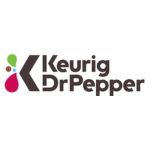

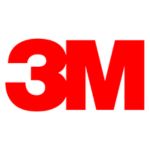
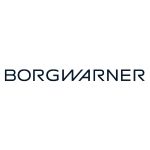
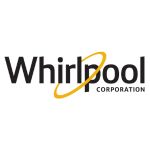
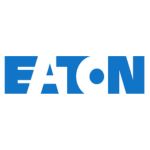
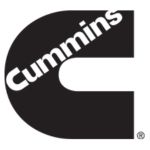








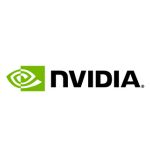
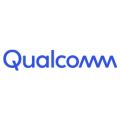



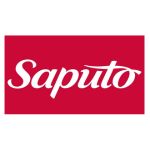

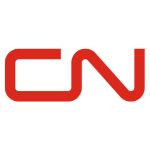
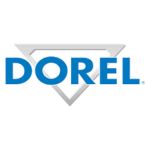
This resource page is for Z-wave end devices
Below are other resource containing useful information on z-wave end devices.
FAQs on Z-Wave End Device on GAOTek.com
How to Choose a Z-Wave End Device
Components of Z-Wave End Devices
Operation, Maintenance & Calibration of Z-Wave End Devices
Customers in the U.S and Canada of Z-Wave End Devices
Contact Us
Here are GAO Tek’s Z-wave end devices
We ship overnight to anywhere on continental U.S. and Canada from one of our local warehouses.
If you have any questions about our products or want to place an order, our technical experts can help you.
Please fill out this form or email us
